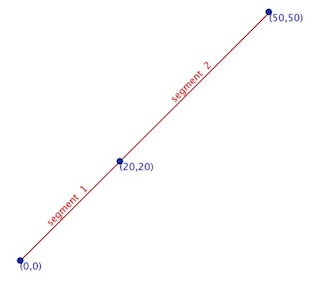Shapely PyQGIS, and GeoDjango use the same API based on the GEOS library:
###With Shapely:
with a list of points:
from shapely.geometry import Point, LineString, mapping
pt1 = Point(0,0)
pt2 = Point(20,20)
pt3 = Point (50,50)
line = LineString([pt1,pt2,pt3])
#GeoJSON format
print mapping(line)
{'type': 'LineString', 'coordinates': ((0.0, 0.0), (20.0, 20.0), (50.0, 50.0))}
or with a list of coordinates:
line = LineString([(0, 0), (20,20),(50,50)])
#GeoJSON format
print mapping(line)
{'type': 'LineString', 'coordinates': ((0.0, 0.0), (20.0, 20.0), (50.0, 50.0))}
###with PyQGIS:
with a list of points:
line = QgsGeometry.fromPolyline([QgsPoint(0,0),QgsPoint(20,20),QgsPoint(50,50)])
#GeoJSON format
print line.exportToGeoJSON()
{ "type": "LineString", "coordinates": [ [0, 0], [20, 20], [50, 50] ] }
###with GeoDjango (look at Django: GEOS API)
with a list of coordinates:
from django.contrib.gis.geos import LineString
line = LineString((0, 0), (20, 20), (50, 50))
# GeoJSON format
print line.json
{ "type": "LineString", "coordinates": [ [ 0.0, 0.0 ], [ 20.0, 20.0 ], [ 50.0, 50.0 ] ] }
The resulting line is made up of two segments: (0,0) to (20,20) and (20,20) to (50,50)

